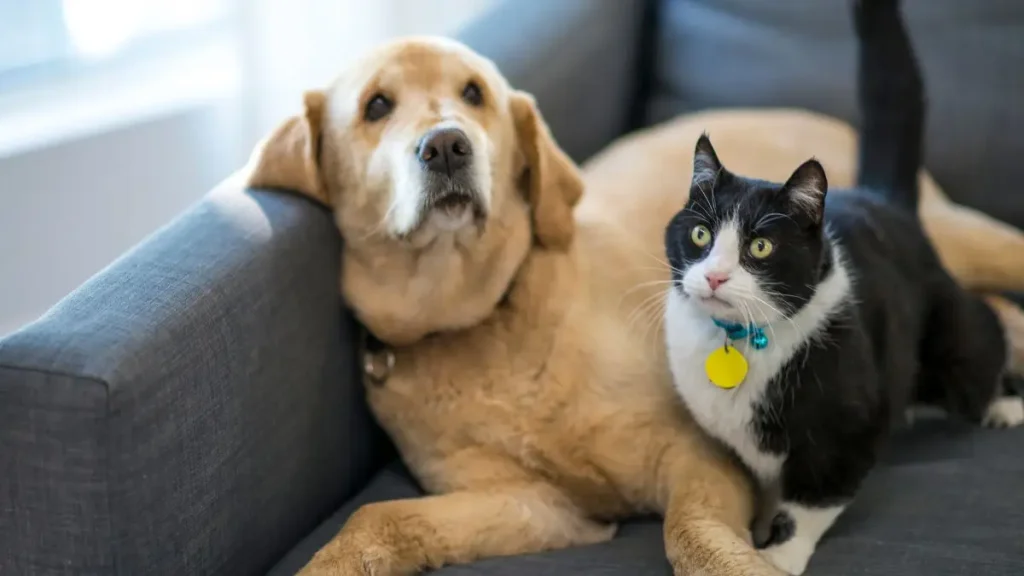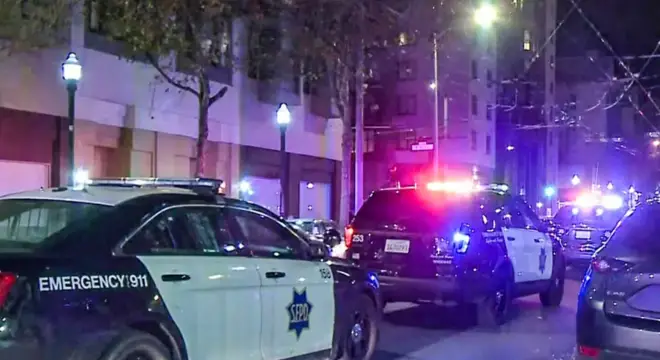Anchorage Home Fire Leaves Dog Dead, Residents Safe
I woke up today to the kind of story no pet owner ever wants to read: an Anchorage house fire that took the life of one family’s dog, while the rest of the household and other pets managed to escape.
It happened early Thursday morning on Turnagain Boulevard, and from the start it had all the hallmarks of a terrifying scene—sirens, smoke, neighbors banging on windows to wake the homeowner, firefighters rushing in with engines and ladders. In moments like this, you don’t think about anything else except who you can save.
For me, what stands out isn’t just the fire itself but the split-second choices. The owner tried desperately to get every pet to safety. Firefighters gave oxygen to a cat in the aftermath. And yet, despite all the effort, an eight-year-old dog named Dexter didn’t make it.
Stories like this hit differently because they remind us how fragile safety feels at home. We take our routines for granted—appliances humming, pets napping—until suddenly, in seconds, everything changes.
If you were in that moment, what’s the first thing you’d grab, and how ready do you really feel to protect the ones who can’t protect themselves?
The Morning Blaze on Turnagain Boulevard
It was just after 7 a.m. when the fire broke out in a west Anchorage home on Turnagain Boulevard and W. 42nd Avenue. According to Alaska’s News Source, firefighters responded with a two-alarm call, sending two battalion vehicles, four engines, and two trucks racing to the scene.
Imagine waking up to pounding on your windows and people shouting at you to get out. That’s exactly how Samuel Navarro, the man inside, realized his home was on fire. One moment he was asleep, the next, he was running for his life.
I don’t know about you, but reading this makes me wonder: if my house went up in flames tomorrow morning, would I even hear the alarm or would I need strangers banging on my window too?
This isn’t the first time we’ve seen a neighborhood shaken by flames—two homes were destroyed in San Antonio when a fire spread uncontrollably earlier this year.
Passersby Who Saved a Life
You and I often think of firefighters as the first line of defense, but here it was ordinary passersby who made the difference. They didn’t just walk past the smoke. They stopped, shouted, and banged on those windows until Navarro woke up.
He later said, “Everything rushed all at once. I was just thinking about the dogs.” That single moment—neighbors choosing to act—likely saved his life.
It makes me pause and ask: would I have the courage to stop and pound on someone’s window if I saw smoke, or would I assume “someone else will handle it”?
The Race to Save the Pets

The fire wasn’t just about one man escaping—it became a desperate attempt to save every animal inside. Navarro tried to carry pets to his car with the help of those passersby. Most of them survived and were rushed to a vet afterward.
There’s one image that sticks with me: a firefighter crouched down giving oxygen to a cat. That’s not just a job—it’s compassion in action. Pets don’t understand what’s happening; they just panic. Seeing someone fight for their lives makes the story human in a way statistics never can.
And yet, despite all the effort, Navarro lost Dexter, his eight-year-old dog. You can almost feel the weight of that guilt in his words: “I’m going to regret it for the rest of my life.”
If you’ve ever owned a pet, you know exactly why those words cut so deep.
Losing a pet in a fire is something no one wants to imagine. What would you do differently if you were in Navarro’s place? Share your thoughts in the comments—I’d love to hear your perspective.
The Twist No One Expected
Here’s the part of the story that almost feels unreal. While the fire burned and chaos unfolded, someone tried to steal Navarro’s car.
Think about that for a second. A man’s house is burning, he’s trying to save his pets, and in the middle of it, someone tries to take his car. Navarro chased the person down and managed to recover it. Later, he said in frustration: “You’re adding more to the fire for no reason.”
I don’t know about you, but this detail hit me hard. It shows the best and the worst of humanity in the same moment—neighbors risking their lives to help, and someone else trying to exploit tragedy.
I saw people talking about this very contrast—good neighbors versus bad actors—on WhatsApp fire safety groups. The conversations there often spark practical ideas about what we can do differently in emergencies.
What Sparked the Fire?
Navarro believes the fire may have started from a freezer his family kept outside. It’s a detail worth noting, because in places like Anchorage, outdoor freezers are common. Families rely on them for space and convenience—but convenience can come with risks.
I dug into fire safety data, and faulty appliances are a well-known cause of residential fires. When you leave a freezer or any electrical appliance exposed to weather and fluctuating temperatures, wiring and insulation can deteriorate faster. It’s something many of us don’t think about until it’s too late.
So if you’re reading this at home, ask yourself: do you have any appliance—inside or outside—that you haven’t checked in years? Because that small “harmless” machine could be a ticking time bomb.
Appliance-related or accidental starts aren’t rare; in fact, two mobile homes in Urbana burned down recently, though thankfully no lives were lost.
Remembering Dexter
For Navarro, the fire isn’t just about smoke, flames, and sirens—it’s about losing Dexter. Eight years of loyalty, companionship, and love gone in a single morning. His words tell the story of regret that every pet owner fears: “Dexter passed away and I forgot about him. I’m going to regret it for the rest of my life.”
I think we’ve all had that one pet who feels more like family than anything else. Losing them suddenly, and in such a traumatic way, leaves scars that don’t fade quickly.
It’s why stories like this stick with you and me—they remind us to hug our pets a little tighter tonight, to make sure they’re included in our escape plans, and to never assume “it won’t happen to me.”
The Bigger Picture: Pets in Residential Fires Nationwide

What happened in Anchorage isn’t an isolated story. Across the U.S., house fires claim the lives of thousands of pets every year. The National Fire Protection Association has estimated that nearly 500,000 pets are affected by fires annually, and about 40,000 don’t survive.
Those numbers aren’t just statistics—they’re family members lost. I know when I read this, it forces me to think: if fires are this common, why don’t we treat pet fire safety as seriously as human fire safety?
In fact, some fire departments now carry pet oxygen masks on their trucks. We saw one used on that cat in Anchorage. It’s proof that awareness is growing, but the reality is, most homes aren’t prepared. And if you or I wait until smoke fills the room, it’s already too late.
Sadly, while pets are often the silent victims, human lives are also at stake—like in a South Austin fire where one person died and another was left critical.
How You and I Can Prepare Right Now?
Reading about this tragedy makes me ask myself: what steps can I take today so I’m not caught off guard tomorrow? And I’d encourage you to ask the same.
Here’s where we can start:
- Check appliances regularly. Don’t ignore that old freezer, heater, or cord.
- Make a pet evacuation plan. Carriers, leashes, and a designated safe spot outside the house.
- Practice a fire drill. Yes, with your pets too. They panic just like kids.
- Use local resources. The Anchorage Fire Department and animal shelters often run awareness programs—these exist to help us, but only if we use them.
If nothing else, walk through your house tonight and ask: “If a fire broke out here, could I get my pets out in time?” That one thought alone could change the outcome.
Final Thoughts
For Navarro, the fire will always carry two truths: gratitude that he’s alive and that most of his pets survived—and grief that Dexter didn’t. That duality is something you and I can both relate to, even if we’ve never lived through flames.
But stories like this aren’t just meant to make us sad; they’re a wake-up call. They show us that safety isn’t theoretical—it’s personal. And if one neighbor’s quick action can save a life, then maybe our small choices at home can do the same.
So I’ll leave you with this: tonight, when you sit down in your living room, look at your pets, your smoke alarms, and your appliances, and ask yourself—
If it happened to me tomorrow morning, would I be ready?
If you want to read more real-life fire stories and safety lessons, I’ve covered similar incidents on Build Like New. Exploring those will give you more perspective on how families cope and what we can all learn from them.
Disclaimer: This article is based on publicly available reports and eyewitness accounts. The cause of the fire is still under official investigation. Information shared here is for awareness and educational purposes only.


